Starting a new garden can be a rewarding experience. Here are some easy steps to get started. First, decide what you want to plant, whether it’s vegetables, herbs, or flowers. Consider your family’s preferences and start small until you gain more experience. Next, choose a suitable spot for your garden that receives 6-8 hours of full sun each day and has easy access to water.
Clear the ground by removing weeds and sod using either a spade or the lasagna gardening method. It’s important to test your soil to determine its nutrients and amend it with organic matter like compost. Prepare your planting beds by loosening the soil and mixing in organic matter. Then, pick the plants that are adapted to your climate, soil, and sunlight preferences.
Start planting either by sowing seeds directly in the garden or by transplanting seedlings. Remember to water your plants at the right time and spend time in your garden each day to observe and care for your plants. Finally, enjoy the harvest of your homegrown produce and flowers.
Key Takeaways:
- Start small and choose plants that suit your preferences and maintenance abilities.
- Choose a location that receives 6-8 hours of full sun per day and easy access to water.
- Clear the ground of weeds and sod and amend the soil with organic matter.
- Pick plants that are adapted to your climate, soil, and sunlight preferences.
- Water your plants at the right time and spend time caring for your garden each day.
Choosing What to Plant
When starting a new garden, it’s important to consider what you want to plant, whether it’s vegetables, herbs, or flowers. Choosing the right plants can be overwhelming, especially for beginner gardeners. However, it’s crucial to select plants that suit your taste and maintenance preferences.
When selecting plants, consider the climate and growing conditions in your area. This will ensure that the plants you choose can thrive in your garden. For example, if your area has hot summers, consider planting heat-tolerant vegetables, such as tomatoes, peppers, and eggplants. If your area receives a lot of rain, choose plants that can handle moist soil, such as ferns and hostas.
Another important factor to consider is the amount of sunlight your garden receives. Most plants require at least six hours of direct sunlight per day, while others can thrive in partial shade. If your garden receives limited sunlight, consider planting shade-tolerant plants like lettuce, spinach, or herbs like parsley and cilantro.
Starting small and selecting easy-to-grow plants is a great strategy for beginner gardeners. Plants like zucchini, green beans, and herbs such as basil and mint are low-maintenance and yield bountiful harvests. It’s also important to choose plants that you and your family enjoy eating or looking at. This way, you’ll be more motivated to care for your garden and enjoy the fruits of your labor.
Whether you decide to start from seeds or purchase young plants, it’s important to plant at the right time and provide proper care. Water your plants regularly (but be careful not to overwater them), feed them with appropriate fertilizers, and provide support (like stakes or trellises) for taller plants.
Finally, the ultimate reward of gardening is enjoying the harvest of your hard work by picking fresh produce from your garden and incorporating it into your meals. Choose plants that have a good yield, such as cherry tomatoes or strawberries, to enjoy the fruits of your labor all season long.
Finding the Perfect Spot
To ensure the success of your garden, finding the perfect spot in your yard is crucial. Before you start, consider what you want to plant – vegetables, herbs, or flowers – and choose a location that receives at least 6-8 hours of full sun each day. This helps your plants grow strong and healthy, as well as produce a bountiful harvest. It’s also important to consider accessibility to water, as your plants will need regular watering to thrive.
Once you’ve chosen a location, it’s time to clear the ground of weeds and sod. This helps your plants grow without any competition for nutrients. Use a tiller or a digging fork to loosen the soil and remove any roots, rocks, or debris. It’s a good idea to test your soil’s pH level and nutrient content using a home test kit, and add organic matter and compost as needed to improve the quality of your soil.
Preparing your planting beds is an important step in creating a healthy garden. Loosen the soil and mix in the organic matter thoroughly to ensure a good growing environment for your plants. This also makes it easier for roots to penetrate the soil, and for water to reach the roots.
When selecting plants, it’s important to choose those that are suitable for your area’s growing conditions. Consider factors such as climate, soil type, and sunlight requirements when making your selection. Don’t hesitate to ask for expert advice at your local garden center or nursery.
Planting can be done either from seeds or from young plants. Make sure to follow the instructions on the seed packets or plant tags. Water your plants at the right time – in the early morning or late afternoon – and be careful not to overwater. It’s important to create a watering schedule that’s appropriate for your plants and climate.
To nurture your plants and ensure a successful harvest, spend time in your garden every day. Observe any changes in growth, and take action to address any problems that arise. Regular maintenance, such as pruning, fertilizing, and pest control, can help keep your plants healthy and productive.
Finally, enjoy the fruits of your labor! Spend time in your garden, relax, and take in the beauty and bounty of your plants. Gardening can be a rewarding and fulfilling hobby, and a great way to connect with nature.

Clearing the Ground
Before you can start planting, it’s important to clear the ground by removing weeds and sod. Weeds can compete with your plants for nutrients and water, while sod can prevent your plants’ roots from growing deeply enough. There are a few different methods for clearing the ground, depending on your preference and the size of your garden.
One method is to cut the sod out of the area where you want to plant. To do this, mark the location of your planting bed with stakes or string. Then, using a sod cutter or a sharp spade, cut underneath the sod to remove it. You can use the sod to fill in low spots in your yard or create a new lawn area.
Another method is called lasagna gardening, which involves layering organic material on top of the ground to smother weeds and grass. To do this, first, mow or cut down any vegetation in the area you want to plant. Then, cover the ground with a layer of cardboard, newspaper, or biodegradable landscape fabric. Next, add layers of organic matter such as compost, shredded leaves, straw, or grass clippings. Alternate layers of brown and green materials until you have a bed that is at least 6 inches deep. Finally, cover the bed with a layer of mulch to conserve moisture and prevent weeds.
| Gardening Tip | Wear gloves and protective clothing when clearing the ground to avoid cuts, scrapes, and exposure to pesticides or herbicides. |
|---|
Once you have cleared the ground, it’s important to maintain weed control throughout the growing season. Regular weeding not only prevents competing plants from stealing nutrients and water, but also helps prevent pests and disease from taking hold in your garden.
One way to control weeds is to hoe or pull them out by hand. This is easiest when weeds are young and their roots are shallow. Another effective method is to use a mulch, such as straw, leaves, or wood chips, which suppresses weed growth by smothering them and blocking sunlight. Be sure to keep the mulch at least 2-3 inches deep and away from the stems of your plants to prevent rot and disease.
By taking the time to clear the ground properly and control weeds, you can give your new garden the best chance of success. Follow these gardening tips for a beautiful and productive garden.
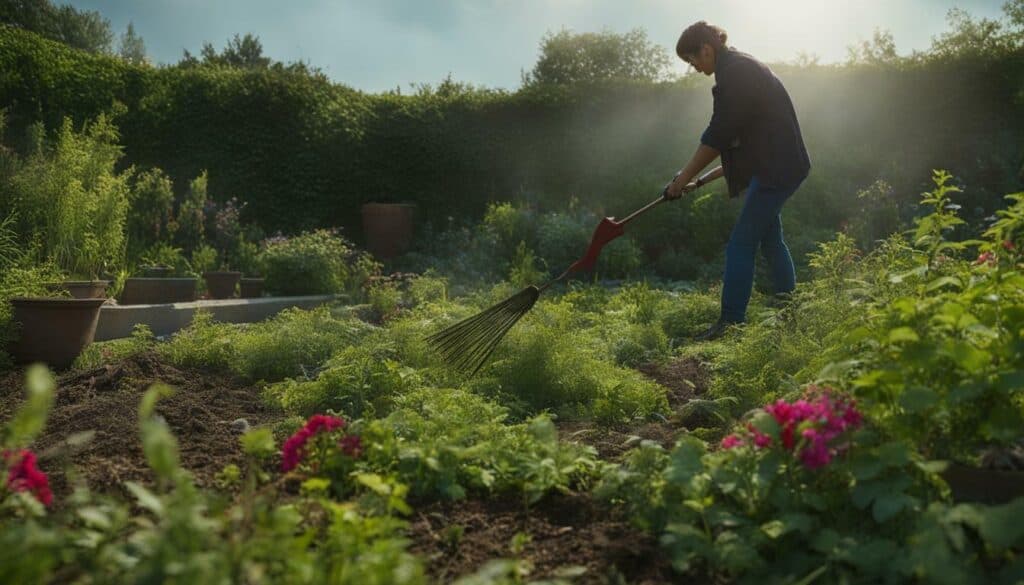
Testing and Preparing the Soil
Understanding the nutrient levels in your soil and making the necessary amendments is essential for a healthy garden. Before choosing plants, it’s important to test your soil to determine its pH levels and nutrient content. Soil testing kits are widely available at garden centers or can be ordered online. After testing the soil, it’s important to make any necessary improvements to ensure optimal plant growth.
One of the best ways to improve soil quality is by adding organic matter. Compost, aged manure, and leaf mold are all excellent sources of organic matter. They help improve soil structure, nutrient content, and drainage. Organic matter also helps feed the beneficial microorganisms that live in the soil and contribute to plant health.
| Tip: | When adding organic matter, aim for a ratio of about 1:3 (one part organic matter to three parts soil). |
|---|
Another option is to use soil amendments, like bone meal, blood meal, and fish emulsion, to add specific nutrients to the soil. Be sure to follow the instructions carefully and avoid over-applying, as this can harm plants.
Once you have amended the soil, it’s important to till or rake the soil to mix the amendments thoroughly. This helps ensure that the nutrients are distributed evenly throughout the soil and that the soil structure is improved.
Remember to choose plants that are adapted to your climate, soil, and sunlight requirements. This will help ensure that they grow well and produce healthy crops. Good gardening tools, like a trowel, rake, and hoe, can also make the process easier and more successful.
Testing and preparing the soil may seem like a daunting task, but it’s an essential step in starting a healthy garden. With the right tools and a little bit of knowledge, you can ensure that your soil is primed for optimal plant growth and a successful harvest.

Selecting the Right Plants
Choosing the right plants for your garden is crucial for their successful growth. Depending on whether you want a vegetable, herb, or flower garden, you should select crops that are suitable for your climate and soil. For vegetable gardens, choose plants that your family enjoys and will eat. Some easy-to-grow vegetables for beginners include tomatoes, cucumbers, and lettuce.
When selecting plants for a flower garden, consider whether you want annuals or perennials. Annuals bloom continuously throughout the season and must be replanted each year, while perennials come back year after year but have a shorter blooming period. Choose plants based on their bloom time and maintenance requirements.
| Tip | When selecting plants, read the labels carefully to ensure they can thrive in your garden’s environment. |
|---|
Once you have decided what to plant, it’s important to choose the right spot for your garden. Look for a location that receives 6-8 hours of full sun each day and has easy access to water.
Before planting, clear the ground of weeds and sod. You can slice under the sod with a spade or use the lasagna gardening method, which involves layering cardboard, newspaper, and compost over the grass to smother it.
It’s important to test and improve your soil by having a soil test done to determine its nutrient levels. Amend the soil with organic matter like compost or aged manure to improve its structure and fertility.
Prepare your planting beds by tilling the soil or digging by hand, and mix in the organic matter. When selecting plants, choose those that are adapted to your climate, soil, and sunlight requirements.

You can start planting by either sowing seeds or transplanting young seedlings. Water your plants at the right time and enjoy watching them grow into a beautiful garden.
Planting Your Garden
Once you’ve selected the plants, it’s time to start planting your garden. It’s important to have the right tools for the job, including a shovel, rake, hoe, trowel, and watering can or hose. If you’re planting seeds directly in the garden, create a furrow in the soil that is the depth recommended on the seed packet. Place the seeds in the furrow and cover them with soil, then water them gently but thoroughly. If you’re transplanting seedlings, dig a hole that’s larger than the root ball of the plant and gently remove it from its container. Place the plant in the hole, fill in with soil, and water it thoroughly.
When selecting your plants, consider their spacing requirements. Some plants need more room to grow than others, so be sure to follow the recommended spacing guidelines on the seed packet or plant tag. To maximize space in your garden, consider using vertical gardening techniques by planting climbers or using trellises. This can also give your garden a unique aesthetic appeal.
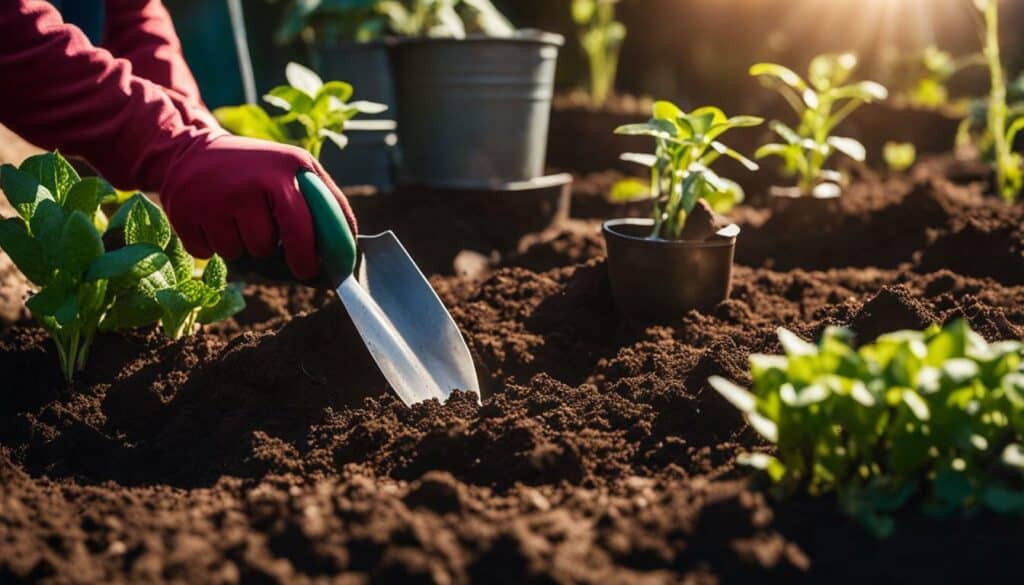
It’s important to water your plants at the right time to ensure their growth. Water them deeply in the morning or evening, and avoid watering during the hottest part of the day to prevent evaporation. Consider setting up a drip irrigation system with a timer to ensure your plants get the right amount of water consistently.
As your plants grow, keep an eye out for pests and disease. Early detection and treatment can prevent damage to your plants. Consider adding a layer of mulch around your plants to retain moisture, suppress weeds, and regulate soil temperature.
Don’t forget to enjoy the process of gardening. Spend time in your garden each day, observe the progress and make adjustments as needed. You’ll experience the joy and satisfaction of harvesting and eating what you have grown.
Proper Watering Techniques
Providing your plants with the right amount of water is crucial for their growth and development. Here are some essential tips for proper watering techniques to maintain a healthy garden:
- Choose the best garden spot: Ensure that the area receives at least 6-8 hours of full sun each day and has easy access to a water source.
- Clear the ground: Remove weeds and sod from the area before planting. You can either cut it out or use the lasagna gardening method by covering the area with newspaper and compost.
- Test and improve your soil: Have a soil test done to determine its nutrient levels and make the necessary amendments. Adding organic matter like compost can improve the soil’s fertility and drainage.
- Prepare your planting beds: Loosen the soil in the beds before planting to promote root growth and access to water and nutrients. Dig or till the soil, mixing in the organic matter at the same time.
- Pick your plants: Choose plants that are adapted to your climate, soil, and sunlight conditions. Consider annuals, perennials, and vegetables that you and your family will enjoy.
- Start planting: Plant your seeds or transplants according to the instructions provided. Water newly planted seeds and seedlings regularly to ensure they don’t dry out.
- Water at the right time: Water your garden in the early morning or late afternoon to minimize evaporation and prevent disease. Avoid watering in the evening as it can lead to excess moisture that promotes fungal growth.
By following these proper watering techniques, you can ensure the health and success of your garden. Remember to monitor your plants’ water needs and adjust accordingly to prevent over or under watering. Regular watering will keep your garden healthy and productive and make it a pleasant space for you and your family to relax in.
Garden Maintenance Tips
Caring for your garden is an ongoing process that requires regular maintenance. Here are some essential tips to keep your garden healthy and thriving:
- Weed regularly: Weeds compete with your plants for water and nutrients. Pull them out by hand or use a hoe or cultivator to loosen the soil and remove them.
- Water deeply and regularly: Water your plants deeply, at least 1-2 inches per week. Use a soaker hose or drip irrigation system to reduce water waste and keep the leaves dry, which reduces the risk of disease.
- Fertilize regularly: Use organic fertilizers to provide your plants with the nutrients they need. Follow the instructions on the label and avoid over-fertilizing, which can burn the plants and damage the soil.
- Prune and deadhead: Regular pruning and deadheading help your plants grow stronger and produce more flowers and fruits. Remove dead or diseased branches, cut back overgrown stems, and pinch off spent blooms.
- Mulch your garden: Mulch helps conserve water, suppress weeds, and regulate soil temperature. Use organic materials like straw, leaves, or grass clippings, and apply a 2-3 inch layer around your plants.
- Use the right gardening tools: Invest in quality gardening tools like a hoe, rake, pruner, and trowel. Keep them clean and sharp, and store them in a dry, protected place.
By following these tips and spending time in your garden, you’ll be rewarded with a beautiful and productive space that brings joy to your day. Happy gardening!
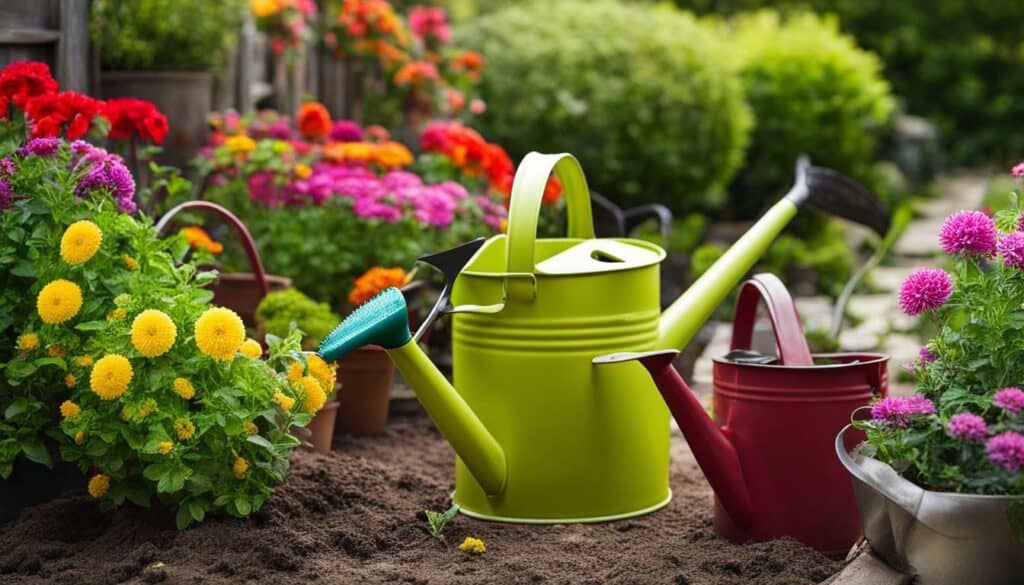
Enjoying the Harvest
Spending time in your garden each day is not only essential for its well-being but also allows you to enjoy the eventual harvest. It’s a great way to relax and connect with nature while also reaping the rewards of your hard work. Here are a few gardening tips to help you enjoy a bountiful harvest:
Organic Gardening
Organic gardening is a popular trend in the gardening world. It promotes the use of natural methods to control pests and diseases, improve soil fertility, and reduce environmental impact. By avoiding chemical pesticides and fertilizers, you can ensure that your produce is healthy, safe, and free from harmful residues.
To get started with organic gardening, you can use compost and organic matter to improve your soil health. It’s also helpful to rotate your crops each year and use companion planting to deter pests and promote pollination.
Garden Maintenance
Maintaining your garden is crucial for a healthy and productive harvest. You should water your plants regularly, keep an eye out for pests and diseases, and prune your plants as needed.
You can also use gardening tools such as a hoe, rake, and shovel to keep your garden tidy and free of weeds. Removing dead leaves and debris from your plants can also help prevent the spread of disease.
Gardening Tips
Here are a few additional gardening tips to help you enjoy your harvest:
- Harvest your produce at the right time to ensure peak flavor and nutrition.
- Use proper storage techniques to keep your produce fresh and flavorful.
- Consider preserving your harvest by canning, freezing, or drying.
- Create a garden journal to keep track of plantings, yields, and growing conditions.
By following these gardening tips and enjoying the fruits of your labor, you can have a successful and rewarding gardening experience. Happy harvesting!
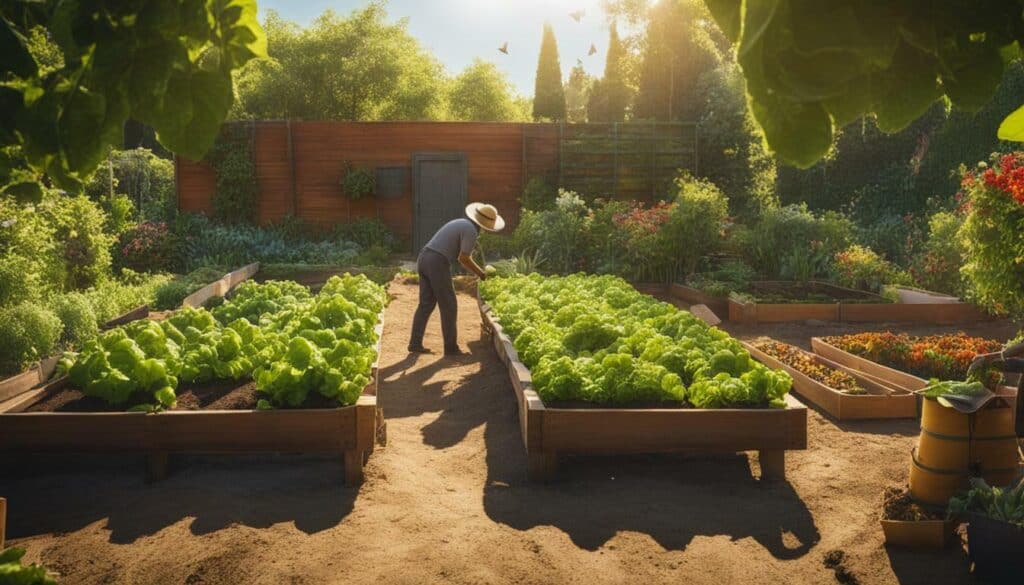
Conclusion
By following these easy steps, you can start your own garden and experience the joy of growing your own plants. Whether you choose to plant vegetables, herbs, or flowers, selecting the right plants and preparing the soil is crucial for success. Clearing the ground of weeds and improving the quality of the soil through testing and adding organic matter is essential.
Choose a location that receives ample sunlight and avoid planting in areas that are prone to flooding. Planning your garden beds and selecting the right tools for the job are also important. Use a planting guide specific to your area and plant what you enjoy eating.
Remember to spend time in your garden each day, keeping the soil moist but not wet and maintaining the health of your plants through proper watering techniques and regular weeding. By paying attention to your garden and picking your produce at the right time, you’ll enjoy a bountiful harvest.
Starting a garden is a great way to get in touch with nature, eat healthier, and save money. With a little hard work and dedication, you can create a beautiful and productive garden that will provide you with joy and satisfaction for years to come. Happy gardening!
What Are Some Easy Steps and Tips for Starting a New Garden?
Starting a new garden can be a rewarding experience. By following some making a garden easy steps & tips, you can create a beautiful outdoor space. Begin by selecting a suitable location with plenty of sunlight. Prepare the soil by removing weeds and adding organic matter. Choose plants that thrive in your region and water them regularly. Remember to provide proper care and maintenance to ensure the success of your garden.
FAQ
Q: What should I consider when choosing what to plant in my garden?
A: Consider your preferences and maintenance capabilities. Start small and choose plants that suit your taste.
Q: How do I find the best spot for my garden?
A: Look for a spot in your yard that receives 6-8 hours of full sun each day. Consider accessibility to water and a relatively flat area.
Q: How can I clear the ground before starting my garden?
A: You can either cut out weeds and sod or use the lasagna gardening method, which involves layering newspaper and compost to smother the grass.
Q: Why is testing and preparing the soil important?
A: Testing your soil helps you understand its nutrient levels. Adding organic matter like compost can improve soil health.
Q: How do I select the right plants for my garden?
A: Consider the climate, soil, and sunlight requirements of the plants. Some easy-to-grow plants for beginners are calendula, zinnias, black-eyed Susans, and cucumbers.
Q: What are the proper techniques for planting a garden?
A: Follow the instructions on seed packets or plant labels. You can either sow seeds directly in the garden or start seedlings indoors before transplanting.
Q: How should I water my plants?
A: Keep the soil moist but not wet. Consider using an automatic watering system or hand-watering as needed.
Q: What are some essential garden maintenance tips?
A: Spend time in your garden every day to observe and care for your plants. Use the right tools and techniques for proper maintenance.
Q: How can I enjoy the harvest from my garden?
A: Take pleasure in your hard work by harvesting the fruits (or vegetables) when they are ready. Enjoy the abundance of your garden.
Source Links
- https://growinginthegarden.com/gardening-for-beginners-how-to-start-a-garden-in-8-simple-steps/
- https://www.bhg.com/gardening/yard/garden-care/ten-steps-to-beginning-a-garden/
- https://commonsensehome.com/start-a-garden/
- https://www.hiddenspringshomestead.com/how-to-start-a-garden/
- https://www.thespruce.com/how-to-start-a-garden-from-scratch-2132778
- https://www.realhomes.com/advice/how-to-choose-plants-for-your-garden
- https://sebsnjaesnews.rutgers.edu/2020/04/choosing-the-right-location-for-your-vegetable-garden/
- https://www.growingwithnature.org/picking-location-for-your-new-garden/
- https://gardening.org/break-ground-for-new-garden-beds/
- https://www.gardendesign.com/soil/
- https://www.almanac.com/soil-preparation-how-do-you-prepare-garden-soil-planting
- https://www.finegardening.com/project-guides/fruits-and-vegetables/how-to-start-a-vegetable-garden-testing-your-soil
- https://www.wikihow.life/Choose-Plants-for-a-Garden
- https://www.gardenersoasis.com/pick-the-right-plants/
- https://platthillnursery.com/how-to-start-a-new-garden-bed/
- https://www.savingwater.org/lawn-garden/watering-irrigation/how-to-water-new-plants/
- https://www.gardeningknowhow.com/garden-how-to/watering/watering-new-plants.htm
- https://www.hgtv.com/outdoors/gardens/planting-and-maintenance/the-proper-way-to-water-your-garden
- https://www.bhg.com/gardening/yard/garden-care/gardening-tips-for-every-gardener/
- https://www.homefortheharvest.com/how-to-start-a-garden/
- https://growingourown.wordpress.com/6-conclusion/

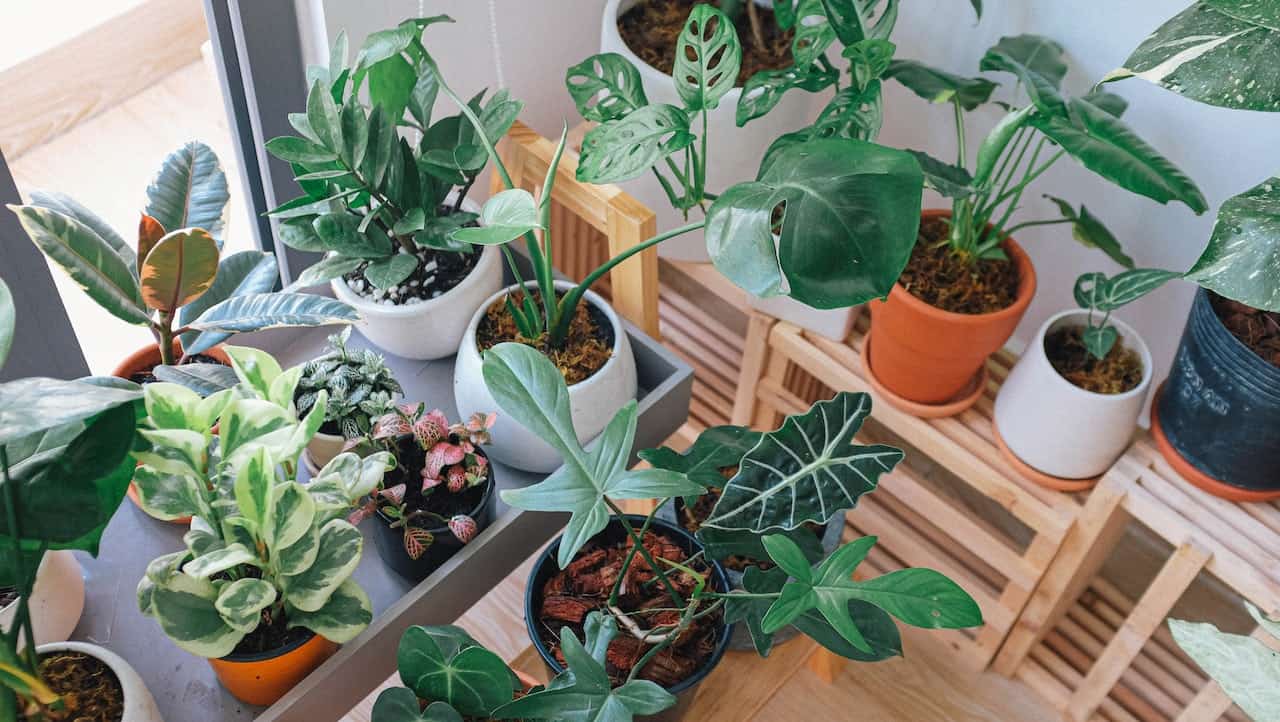



Leave a Reply